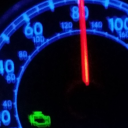I noticed a bit of panic around here lately and as I have had to continuously fight against pedos for the past year, I have developed tools to help me detect and prevent this content.
As luck would have it, we recently published one of our anti-csam checker tool as a python library that anyone can use. So I thought I could use this to help lemmy admins feel a bit more safe.
The tool can either go through all your images via your object storage and delete all CSAM, or it canrun continuously and scan and delete all new images as well. Suggested option is to run it using --all once, and then run it as a daemon and leave it running.
Better options would be to be able to retrieve exact images uploaded via lemmy/pict-rs api but we’re not there quite yet.
Let me know if you have any issue or improvements.
EDIT: Just to clarify, you should run this on your desktop PC with a GPU, not on your lemmy server!
Hey @db0@lemmy.dbzer0.com, just so you know, this tool is most likely very illegal to use in the USA. Something that your users should be aware of. I don’t really have the energy to go into it now, but I’ll post what I told my users in the programming.dev discord:
that is almost definitely against the law in the USA. From what I’ve read, you have to follow very specific procedures to report CSAM as well as retain the evidence (yes, you actually have to keep the pictures), until the NCMEC tells you you should destroy the data. I’ve begun the process to sign up programming.dev (yes you actually have to register with the government as an ICS/ESP) and receive a login for reports.
If you operate a website, and knowingly destroy the evidence without reporting it, you can be jailed. It’s quite strange, and it’s quite a burden on websites. Funnily enough, if you completely ignore your website, so much so that you don’t know that you’re hosting CSAM then you are completely protected and have no obligation to report (in the USA at least)
Also, that script is likely to get you even more into trouble because you are knowingly transmitting CSAM to ‘other systems’, like dbzer0’s aihorde cluster. that’s pretty dang bad…
here are some sources:
- https://www.law.cornell.edu/uscode/text/18/2258A
- https://crsreports.congress.gov/product/pdf/LSB/LSB10713
- https://www.missingkids.org/theissues/csam
- https://www.cloudflare.com/service-specific-terms-application-services/#csam-scanning-tool-terms
- https://developers.cloudflare.com/cache/reference/csam-scanning/#what-happens-when-a-match-is-detected
- https://developers.cloudflare.com/cache/reference/csam-scanning/#what-action-should-i-take-when-a-match-is-detected
Note that the script I posted is not transmitting the images to the AI Horde.
Also keep in mind this tool is fully automated and catches a lot of false positives (due to the nature of the scan, it couldn’t be otherwise). So one could argue it’s a generic filtering operation, not an explicit knowledge of CSAM hosting. But IANAL of course.
This is unlike cloudflare or other services which compare with known CSAM.
EDIT: That is to mean, if you use this tool to forward these images to the govt, they are going to come after you for spamming them with garbage
Cloudflare still has false positives, the NCMEC does not care if they get false positives. If you read some of those links I provided it wouldn’t be considered a generic filtering operation, from how I’m reading it at least. I wouldn’t take the chance, especially not with running the software on your own hardware in your own house, split from the server.
I think you’re not in the US? So it’s probably different for your jurisdiction. Just want to make it clear that in the US, from what i’ve read up on, this would be considered against the law. You are running software to filter for CSAM, so you are obligated to report it. Up to 1 year jail time for not doing so.
One can easily hook this script to forward to whoever is needed, but I think they might be a bit annoyed after you send them a couple hundred thousand false positives without any csam.
The problem is you aren’t warning people that deleting CSAM without following your applicable laws can potentially get people that use your tool thrown in jail. You went ahead and built the tool without detailing any of the applicable laws around it. Cloudflare explicitly calls out that in their documentation because it’s very important. I really like the stuff you put out, but this is not the way to do it. I know lots of people on Lemmy hate CF and any sort of large company, but running this stuff yourself without understanding the law is sure to get someone in trouble.
I don’t even know why you think I was recommending for your system to forward the reports to the authorities. I didn’t sleep very much last night, so I must have glazed over it, but I see nowhere where I said that.
Honestly, I thinking you’re grossly overstating the legal danger a random small lemmy sysadmin is going to get into for running an automated tool like this.
In any case, you’ve made your point, people can now make their own decisions on whether it’s better to pretend nothing is wrong on their instance, or if they want at least this sort of blanket cleanup. Far be it from me to tell anyone what to do.
I don’t even know why you think I was recommending for your system to forward the reports to the authorities
You may not have meant it, but you strongly implied something of the sort. But since this is not what you’re suggesting I’m curious to hear what your optimal approach to those problem would be here.
You may not have meant it, but you strongly implied something of the sort. But since this is not what you’re suggesting I’m curious to hear what your optimal approach to those problem would be here.
Optimal approach is to use the existing systems that are used by massive corporations to solve this problem already. I know everyone on lemmy hates that, but this isn’t something to mess around with. The reason this is optimal is because NCMEC provides the hashes only to these companies. You’re not going to be able to get the hashes (this is a good thing… imagine some child abuser getting access to these hashes and then using them to evade detection). So if you can’t get these hashes (and you shouldn’t want them either) then you should use a service that has them. It is by far the best way to filter and has been proven time and time again to be successful.
The easiest is CloudFlare’s, and yes, you will have to use them as your DNS which I also understand a vast majority of admins hate. But there are other options as well
- PhotoDNA
- Safer
- Facebook PDQ
Because access to the original hash databases is considered sensitive, NCMEC will not provide these to smaller platforms. Neither will Microsoft provide the source code of its PhotoDNA algorithm except to its most trusted partners, because if the algorithm became widely known, it is thought that this might enable abusers to bypass it.
In that article, it actually points out that a solution called Safer that uses machine learning and image recognition has very flawed results and is incredibly biased. So if these massive platforms can’t get this kind of image recognition right then it’s probably best to not waste money and time on it. The article even points out that for smaller platforms it’s not worth it.
We also know in general terms that machine learning algorithms for image recognition tend to be both flawed overall, and biased against minorities specifically. In October 2020, it was reported that Facebook’s nudity-detection AI reported a picture of onions for takedown. It may be that for largest platforms, AI algorithms can assist human moderators to triage likely-infringing images. But they should never be relied upon without human review, and for smaller platforms they are likely to be more trouble than they are worth
I look forward to see your success with that approach. Godspeed
As a test, I ran this on a very early backup of lemm.ee images from when we had very little federation and very little uploads, and unfortunately it is finding a whole bunch of false positives. Just some examples it flagged as CSAM:
- Calvin and Hobbes comic
- The default Lemmy logo
- Some random user’s avatar, which is just a digital drawing of a person’s face
- a Pikachu image
Do you think the parameters of the script should be tuned? I’m happy to test it further on my backup, as I am reasonably certain that it doesn’t contain any actual CSAM
This is normal . You should be worried if it wasn’t catching any false positives as it would mean a lot of false negatives would slip though. I am planning to add args to make it more or less severe, but I it will never be perfect. So long as it’s not catching most images, and of the false positives most are porn or contain children, I consider with worthwhile.
I’ll let you know when the functionality for he severity is updated
How do you even safely test scripts/tools like this 😵💫
I’d bet there’s a CSAM test image dataset with innocuous images that get picked up by the script. Not sure how the system works, but if it’s through hashes then it would be pretty simple to add that to the script.
I don’t host a server myself, but can this tool identify the users who posted the images and create a report with their IP addresses?
This could help identify who spreads that content and it can be used to notify authorities. No?
No but it will record the object storage We then need a way to connect that path to the pict-rs image ID, and once we do that, connect the pict-rs image ID to the comment or post which uploaded it. I don’t know how to do the last two steps however, so hopefully someone else will step up for this
Thank you for helping make the fediverse a better place.
Worth noting you seem to be missing dependencies in
requirements.txtnotably unidecode and strenumAlso that this only works with GPU acceleration on NVidia (maybe, I messed around with trying to get it to work with AMD ROCm instead of CUDA but didn’t get it running)
Ah thanks. I’ll add them
to run on ROCm, you need a specific version of pytorch.
but it is still in beta, i would not expect it to run well
I know, I tried and ran into some problems there. I just pulled out my NVidia laptop and got it to go (slowly)
Hi db0, if I could make an additional suggestion.
Add detection of additional content appended or attached to media files. Pict-rs does not reprocess all media types on upload and it’s not hard to attach an entire .zip file or other media within an image (https://wiki.linuxquestions.org/wiki/Embed_a_zip_file_into_an_image)
Currently I delete on PIL exceptions. I assume if someone uploaded a .zip to your image storage, you’d want it deleted
The fun part is that it’s still a valid JPEG file if you put more data in it. The file should be fully re-encoded to be sure.
In that case, PIL should be able to read it, so no worries
But I could take ‘flower.jpg’, which is an actual flower, and embed a second image, ‘csam.png’ inside it. Your scanner would scan ‘flower.jpg’, find it to be acceptable, then in turn register ‘csam.png’. Not saying that this isn’t a great start, but this is the reason that a lot of websites that allow uploads re-encode images.
my pict-rs already re-encodes everything. This is already a possibility for lemmy admins
Good to hear they have that covered already. Looks like a great tool!
As @Starbuck@lemmy.world stated. They’re still valid image files, they just have extra data.
Opened a relevant issue: https://github.com/LemmyNet/lemmy/issues/3920
based db0 releasing great tools and maintaining a great community
Hey db0 thanks for putting in extra effort to help the community (as you have multiple times) when big issues like this crop up on Lemmy.
Despite being a pressing issue this is one that people also are a little reluctant to help solve because of fear of getting in trouble themselves. (How can a server admin develop a method to detect and remove/prevent CSAM distribution without accessing known examples which is extremely illegal?)
Another time being the botspam wave where you developed Overseer in response very quickly. I’m hoping here too devs will join you to work out how to best implement the changes into Lemmy to combat this problem.
Thank you for this! Awesome work!
By the way, this looks easy to put in a container. Have you considered doing that?
I don’t speak docker, but anyone can send a PR
I’ll try it out today. I’m about to start my workday, so it will have to be in a few hours. Fingers crossed I can have a PR in about 16 hours from now.
deleted by creator
Any thoughts about using this as a middleware between nginx and Lemmy for all image uploads?
Edit: I guess that wouldn’t work for external images - unless it also ran for all outgoing requests from pict-rs… I think the easiest way to integrate this with pict-rs would be through some upstream changes that would allow pict-rs itself to call this code on every image.
You might be able however integrate with my AI Horde endpoint for NSFW checking between nginx and Lemmy.
https://aihorde.net/api/v2/interrogate/asyncThis might allow you to detect NSFW images before they are hosted
Just send a payload like this
curl -X 'POST' \ 'https://aihorde.net/api/v2/interrogate/async' \ -H 'accept: application/json' \ -H 'apikey: 0000000000' \ -H 'Client-Agent: unknown:0:unknown' \ -H 'Content-Type: application/json' \ -d '{ "forms": [ { "name": "nsfw" } ], "source_image": "https://lemmy.dbzer0.com/pictrs/image/46c177f0-a7f8-43a3-a67b-7d2e4d696ced.jpeg?format=webp&thumbnail=256" }'Then retrieve the results asynchronously like this
{ "state": "done", "forms": [ { "form": "nsfw", "state": "done", "result": { "nsfw": false } } ] }or you could just run the nsfw model locally if you don’t have so many uploads.
if you know a way to pre-process uploads before nginx sends them to lemmy, it might be useful
Exactly. If the pict-rs dev allowed us to run an executable on each image before accepting it, it would make things much easier
Amazing work.
Just going to argue on behalf of the other users who know apparently way more than you and I do about this stuff:
WhY nOt juSt UsE thE FBi daTaBaSe of CSam?!
(because one doesn’t exist)
(because if one existed it would either be hosting CSAM itself or showing just the hashes of files - hashes which won’t match if even one bit is changed due to transmission data loss / corruption, automated resizing from image hosting sites, etc)
(because this shit is hard to detect)
Some sites have tried automated detection of CSAM images. Youtube, in an effort to try to protect children, continues to falsely flag 30 year old women as children.
OP, I’m not saying you should give up, and maybe what you’re working on could be the beginning of something that truly helps in the field of CSAM detection. I’ve got only one question for you (which hopefully won’t be discouraging to you or others): what’s your false-positive (or false-negative) detection rate? Or, maybe a question you may not want to answer: how are you training this?
I’m not training it. Im using publicly available clip models.
The false positive rate is acceptable. But my method is open source so feel free to validate on your end
Acceptable isn’t a percentage, but I see in your opinion that it’s acceptable. Thanks for making your content open source. I do wish your project the best of luck. I don’t think I have what it takes to validate this myself but if I end up hosting an instance I’ll probably start using this tool more often myself. It’s better than nothing at at present I have zero instances but also zero mods lined up.











